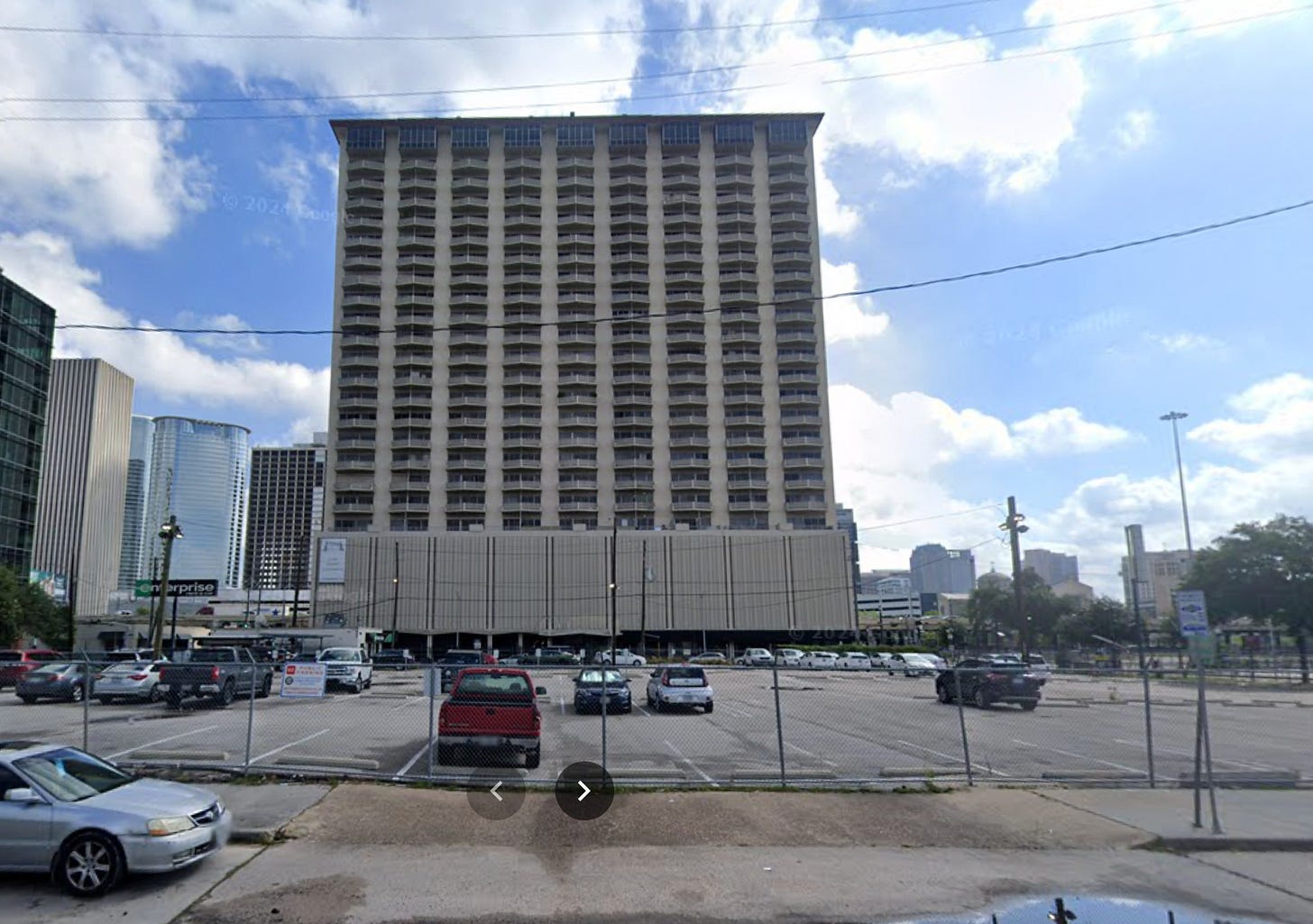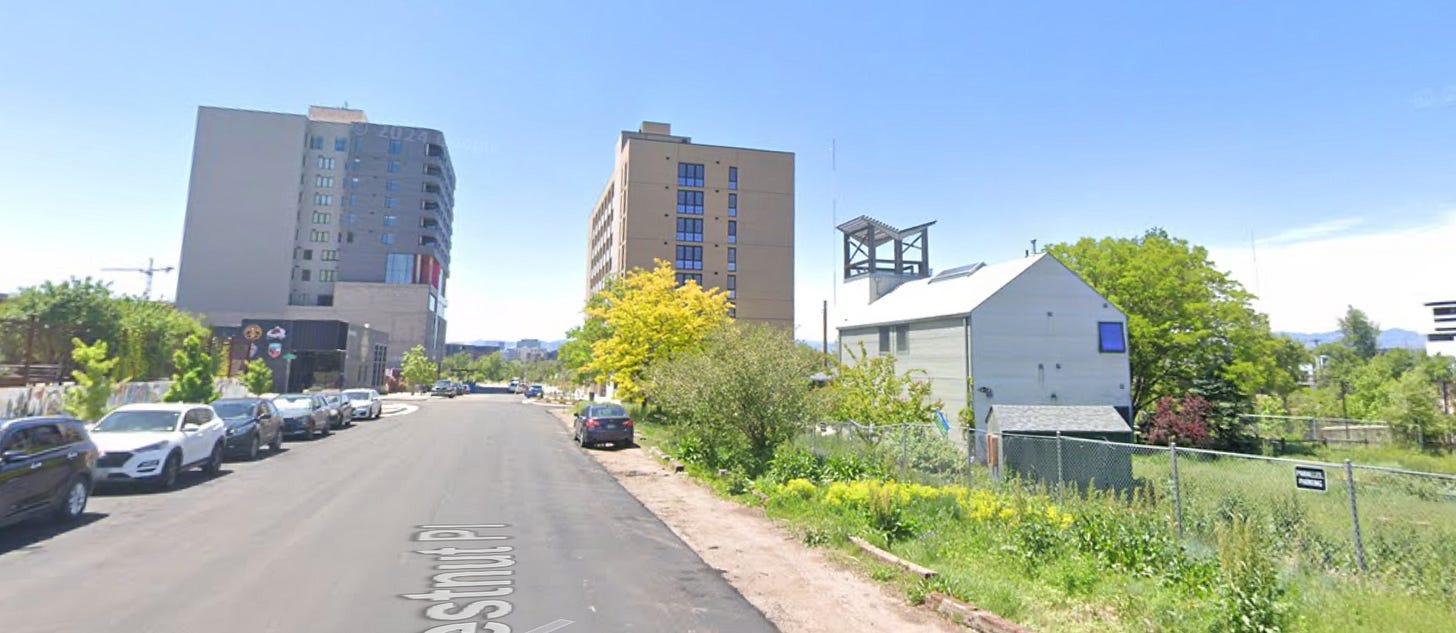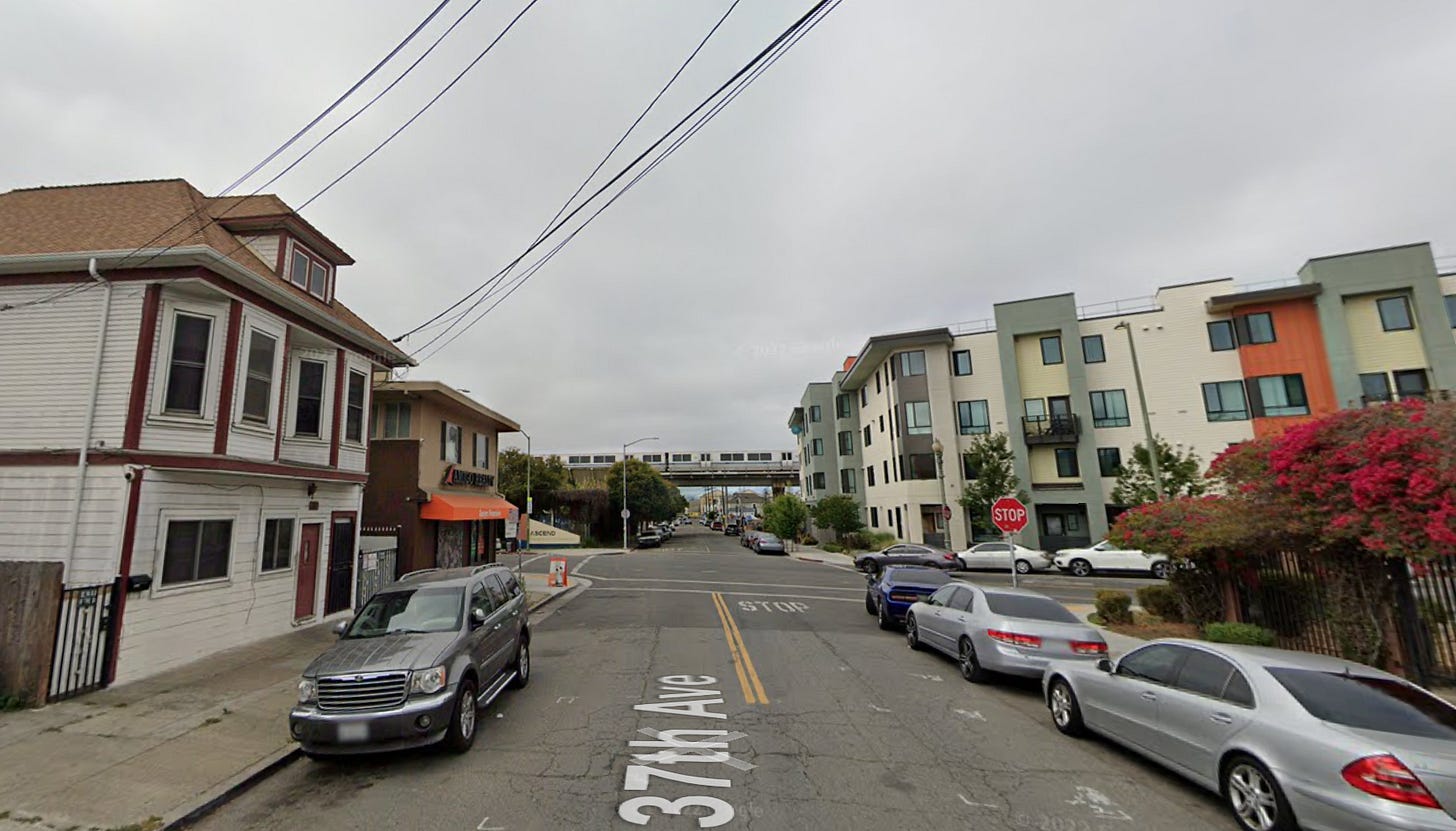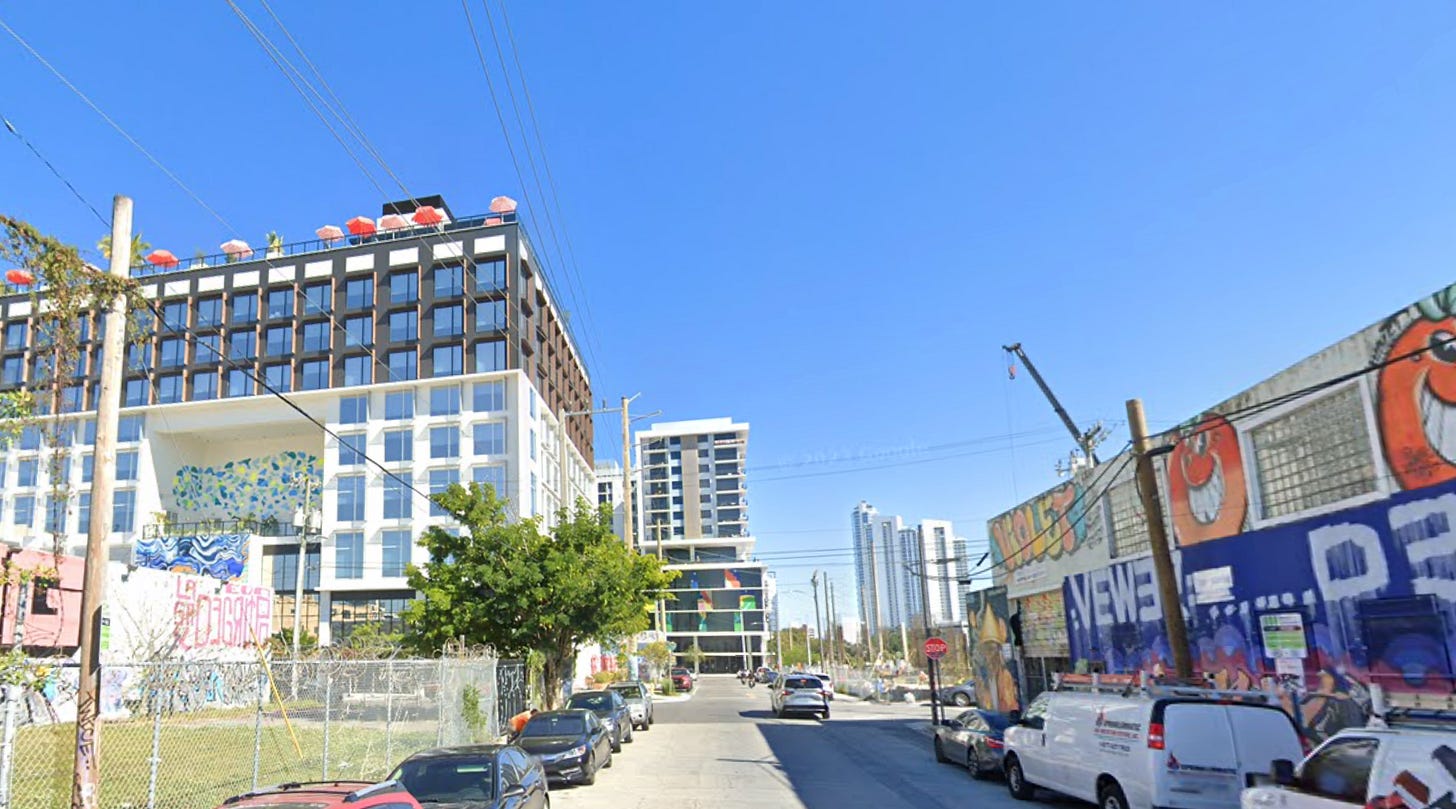Big leaps in development tend to stall out
It's hard to keep delivering units after early large-scale projects reset the market
There’s a subset of the pro-housing community that tends to describe how much pent-up demand we have for housing, and how, when we finally uncap development, we’ll see a big leap in development. They speak of this manifesting in a wave of towers rising around the underdeveloped centers of our in-demand cities. They tend to lionize projects like this 54-story “megaproject” in Miami, or “potentially the nation’s tallest tower” in Oklahoma City.
My feelings about projects like this are complex.
On the one hand, I strongly believe in free markets and property rights, and if someone wants to build a residential tower, my bias is to say they should be allowed to just do it.
But on the other hand, I think that projects like this have little to no chance of solving a housing shortage, and can distort the surrounding market in ways that outweigh their benefits. And I think that because we have two generations of evidence in front of us that in the places where big leaps in development are permitted, development moves slower than in places where it isn’t.
What’s wrong with this picture?
This is a street view of 2016 Main St in Houston, Texas. This 26-story condo tower was built in 1964, and claims to be the first residential high-rise in Houston. Units sell for around median prices for the metro area. So what’s wrong with this picture?
Did you notice the entire block across the street is just a surface parking lot? It has been for 50+ years. Why is that?
Let’s go a few blocks down Main Street to McGowen Station. We have one story commercial across the street from another surface parking lot. That one says it’s for sale — although it presumably has been for a generation.
Houston famously doesn’t have zoning or height restrictions, and the lots shown in these photos have never had parking requirements. There’s high quality light rail service adjacent to these lots. Houston has been one of the highest-growth cities in the country for more than 50 years. And Midtown Houston has been redeveloping for more than twenty years, with dozens of successful new apartment complexes built in the surrounding area.
You would be hard-pressed to find more YIMBY-optimal lots in the entire country.
And that’s kind of the problem.
When there’s a giant gap between the current use of the land and the obvious market-demanded future use for the land, lots like this get stuck in limbo and take a very long time to turn over and redevelop.
Why is “big redevelopment” so slow?
In any cycle of development, early pioneers acquire land that other people don’t see as particularly valuable and develop it to some “higher and better” use. If those first few projects succeed, the surrounding land owners recognize their land is worth more than they previously thought, and raise their prices to capture this new value.
In a stable market, it’s not obvious that there is demand for something more valuable than the current land use, and there are many lots that are around the same value, so sale prices will be based on the value of the property as it is today. If someone does buy a building and redevelop it to the next increment, that results in marginal appreciation in nearby properties, but doesn’t reset the market to a new equilibrium.
But when a giant gap has opened up between the value of the current land use and future land use, this creates an unstable market. Every property owner “knows” the fate of their building is to be torn down and replaced by something much bigger. Therefore they logically don’t want to invest very much in maintaining what they have, and do they do want to hold out for the maximum payoff they can extract as the area transforms. This leads to a strange mix of new development sprinkled among declining properties.
Edit: to say this in a punchier way, courtesy of
:The problem with Midtown is the greedy land speculators who can afford to hold because their tax appraisals are too low. This leaves us in bizarro world, where nobody builds there because the land is too valuable.
You can see this phenomenon all over the country. Here are just a few examples.
Now, you might argue: these places are filling in, it can’t happen overnight. What else would you expect?
And you’d be right! These places are filling in, and it takes a very long time, and we can’t expect anything else.
Doing big redevelopment projects like this requires a lot of capital, a lot of expertise, and incurs a lot of risk. Very few firms can bring a project like this to market. But anyone can hold out for eye watering prices for their vacant lot. And, absent a corrective measure like Land Value Tax, everyone is incentivized to do that.
In practice this means that bringing large scale redevelopment to market is slow and painful even when regulatory barriers aren’t there. It’s not realistic to expect this to be the only way, or the primary way, that we deliver units to undersupplied housing markets.
What actually scales?
Going back to Houston, I want to point out how long large-scale development takes, even in a place that doesn’t have substantial regulatory barriers in place.

Houston demolished its city center in the 50’s and 60’s. And even though there’s virtually no barrier to redevelopment, after 60 years that parking crater is less than half redeveloped.
Midtown Houston is, by American standards, a success story for residential infill and redevelopment. While I couldn’t find an exact number, based on the change I’ve seen since I lived there in the late 00’s, I estimate more than 10 thousand units have gone up in the last 25 years. But at the same time, the neighborhood is also still a patchwork of razor wire, vacant lots, and vacant storefronts.
In contrast to the pace of development in the city center, Houston has added more than 80 thousand units, sprinkled all over the city, since it reduced minimum lot size restrictions in 1998. And these new homes are predominantly blended into pleasant, stable neighborhoods that have evolved gradually over that time period. Land values have gone up, but they haven’t spiked and frozen the market in limbo, so this widespread incremental development continues apace.
“Speed” isn’t often stated as an explicit goal of the pro-housing movement, but it should be. It would be noble for us to solve this problem for future generations, and if that is the best we can do, so be it. But the urgency of the problem demands we look for solutions that can make an impact now. By all means, that should include large-scale capital intensive projects where they make sense. But I think that if we pin our hopes too much on big projects and neglect broad, incremental reform, we’re setting ourselves up for disappointment.







Thanks Andrew - I think this is an important vein to engage with, as this problem appears all over the place.
One component I don't think you mentioned: some of those parking lots may be encumbered (by lease or easement) to nearby buildings, and therefore not even marketable. One would have to do some digging to identify what percentage of those properties are marketable.
Second, I think it would be really interesting if some historian are archivist were to better explore the process by which land transacted during these distributed incremental booms like NYC or Chicago especially. Like what really happened? Why weren't land speculators locking up land and waiting for prices to go up? Or if they were what stopped that from blocking the growth of the overall market. This seems important!
Because actually rapid incremental growth is actually uncommon in work history (not perhaps rare... but uncommon).
Incrementalism is not a solution to Midtown's problem. If it were, there would already be incremental development there. The problem with Midtown is the greedy land speculators who can afford to hold because their tax appraisals are too low. This leaves us in bizarro world, where nobody builds there because the land is too valuable. LVT! Interestingly, in the late 1800s, a printer named JJ Pastoriza was buying up land in Midtown and built a shoddy cabin on one lot, which he donated to the local Georgist league that he founded.